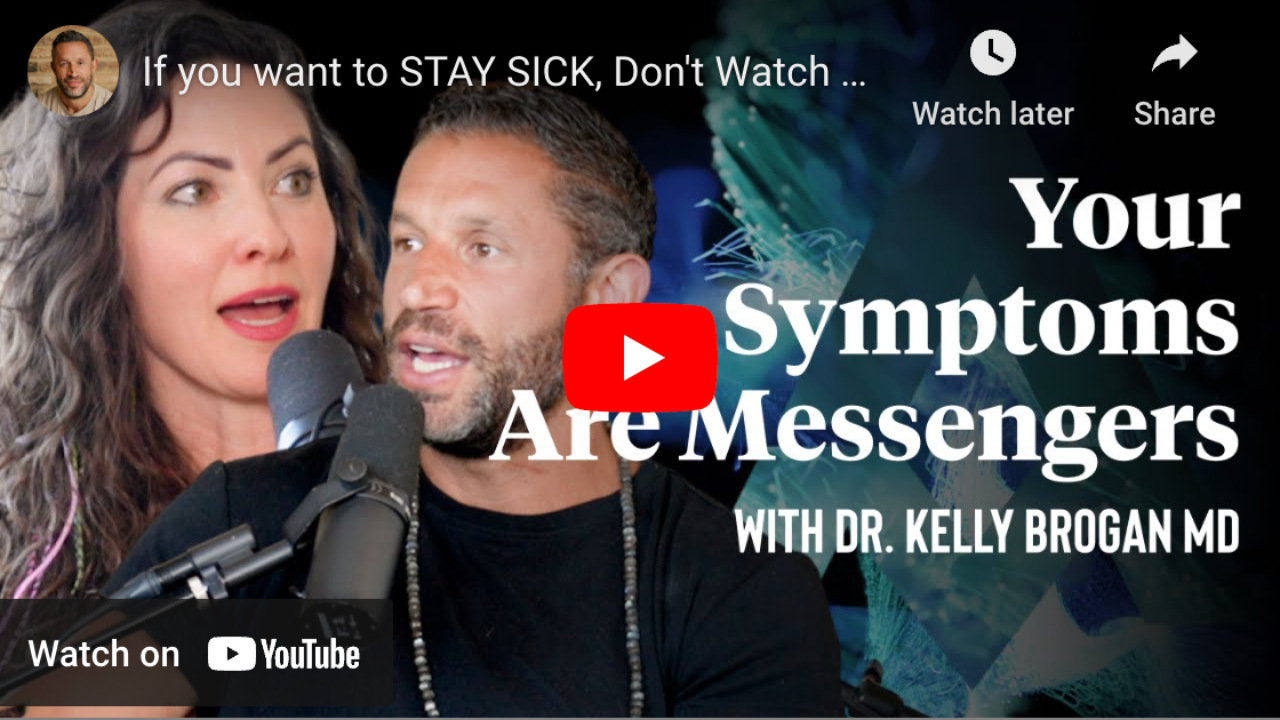Guarding Our Youth?

When I was in medical school, I had my first abnormal Pap, and it was quite abnormal, a precancerous lesion described as CIN2 (now revealed to be one of the most inaccurately diagnosed pathologies). I had two very unpleasant “therapeutic biopsies” called colposcopies, and two years later, it was normal.
That was that.
But I remember hearing about the approval of the Gardasil vaccine when I was a resident and thinking, “Amazing! Today’s girls are so lucky.” I have a very different perspective on this intervention today; in fact, my feminist sensibilities are outraged at what is being done to girls and young women around the world.
I’d like to share an introductory primer to these concerns. Be forewarned, after reading this, you might have trouble enlisting pharmaceutical companies to keep you healthy in the future.
One Size Fits All?
This is, perhaps the most important concept to wrestle with when it comes to providing and mandating pharmaceutical products in otherwise healthy populations. These products are based on a now largely antiquated notion of exposure to virus = infection and, as a corollary, that antibody production = protection.
Now we know that neither of those premises are true.
I recently hired a team of burly individuals to remove the poison ivy that had overgrown in our front yard. How did they do it? With their bare hands. These individuals were naturally immune. My dad, on the other hand, came back in with a new crop of blisters every time he walked outside.
I’m sure you’ve been the one who has been left unscathed when the flu ran through your house, or maybe you’re the one who always seems to get sick. This is an every-day representation of inter-individual variability in immunity. Our best understanding of this concept hinges on inherited variants in genes that encode for immune response mechanisms, and then the different expression of these variants in the setting of environmental factors.
There are seemingly infinite variables accounting for the immune response through natural mucosal exposure, and we don’t have any better of a grasp on why different people respond differently to vaccines, which bypass natural immunity and provoke inflammatory responses.
It is a noble intention to protect the population from the ravages of infectious disease; however, this intention is an impossible one to achieve through current vaccination science.
A productive discussion of this concern by Poland et al references variable response to the Measles vaccine as depicted in the graphic to the right.
We also know that antibody production, even if it does occur, is not always necessary or sufficient for protection since agammaglobulinemics have demonstrated normal progression of disease even though they are not capable of making antibodies, and outbreaks of many different diseases have occurred in highly vaccinated populations.
Back to cervical cancer. Once again, we have a one-size fits all recommendation for healthy women to prevent an extremely rare outcome – death from cervical cancer. Let’s take a look at how to evaluate the considerations for you or someone you know:
1. Not Indicated: I’m afraid that the propaganda around “One less” has been in service of fearmongering around a not-so-scary problem. In the developing world, and with the use of routine Pap smears, the incidence of cervical cancer deaths are 1.4-1.7/100,000. There are 15 (known) of 100 different strains of human papilloma virus, and the vaccines reportedly protect against 2 of these. The natural course of infection with any of these strains has been demonstrated to involve resolution of 70% of infections within one year and 90% within 2-3 years. Of the remaining, unresolved infections, only 5% of those typically progress to cancer. Thus, we have an effective, extremely low risk to no risk intervention that is already doing the job of detecting these misbehaving cells (the Pap), and if there is not spontaneous resolution, we have effective surgical interventions such as the Loop Electrosurgical Excision Procedure (LEEP).
2. Not Effective: So, if we are suggesting that this vaccine is unnecessary, is it effective at what it claims to do, which is prevent deaths? This question remains unanswered, despite fast-track approval by the FDA in 2006, because cervical cancer takes about 20-40 years to manifest. The trials that have been done – sponsored by the pharmaceutical company producing the product – have used HPV infection associated cellular changes called CIN1-3 as a surrogate for cancer.
Thus, the premise for asserting efficacy rests on speculation that abnormal lesions will progress to cancer, which we have already discussed, they do not, most of the time.
For the reasons above, this involves a major theoretical leap. When infection by all types of HPV are considered, efficacy drops to <40% as discussed in a stunning analysis by Tomljenovic et al. who quote:
“Modeling indicates that HPV vaccination [with Cervarix] will prevent potentially 17% of the abnormal Pap tests based on current knowledge of HPV type distribution and only a very few cancers that Pap testing would not have detected, not enough to lower the population incidence of cervical cancer lower than what screening already accomplishes.”
This post discusses, in depth, the suspect interpretation of the available data, but perhaps, as we shall see below, one of the bigger concerns is the incidence of high grade lesions after receiving the vaccine arguing not only for lack of efficacy, but for active risk.
3. Not Safe: At this point in time, the death rate from cervical cancer has been outpaced by the incidence of deaths (>108 currently) and serious adverse events (24,184 including 1300 in pregnant women) reported to the Vaccine Adverse Events Reporting System since 2006.
These adverse events include but are not limited to: deaths, convulsions, paralysis, paraesthesia, demyelinating diseases of the central nervous system (i.e., multiple sclerosis and acute disseminating encephalomyelitis), Guillain-Barre´ syndrome (GBS), transverse myelitis, facial palsy, chronic fatigue syndrome, anaphylaxis, autoimmune disorders, deep vein thrombosis, pulmonary embolisms, pancreatitis, visual impairments and spontaneous abortions. If these more anonymous incidences aren’t swaying you, then consider the case of two deaths of young women after receiving the vaccine in which the vaccine strain of HPV was found adhered to the vessels of their inflamed brain tissue.
The meticulous analysis is discussed in this paper as is the curious fact that the coroner did not look for autoimmune pathology in the post-mortem assessment despite the fact that encephalitis is a known side effect of vaccination. Because “placebo” in many of the studies designed to demonstrate vaccine safety often contains toxic immune disabling adjuvants, like aluminum, in this case, it is not a valid assessment of risk. We know that metals like aluminum get carried across the blood brain barrier by immune cells called macrophages, and incite further immunologic cascades in the brains of some vaccine recipients.
Related to my initial discussion of lack of individualization of these recommendations, it is not recommended that women be screened for pre-existing exposure to HPV even though they are at higher risk for exacerbated pathology post-vaccination, and no effort is made to determine who might be at risk for an autoimmune reaction, such as HLA typing. In all likelihood, we don’t sufficiently understand the immune system to predict who is going to have an adverse reaction.
t may be thus appropriate to ask whether it is worth risking death or a disabling life-long neurodegenerative condition such as GBS at a pre-adolescent age for a vaccine that has only a theoretical potential to prevent cervical cancer, a disease that may develop 20 to 40 years after exposure to HPV, when the same can be prevented with regular Pap screening.
Safe Alternatives to Gardasil
If we have known risk factors, such as chronic inflammation, immune system suppression due to suboptimal hygiene and/or nutrition, smoking, long-term use of oral contraceptives (OC) and multiple sexual partners conducive to sexually transmitted diseases, then what can we do to minimize risk and maximize spontaneous resolution of abnormal Paps? Well, I’ve discussed some of my feelings on the Pill in this post here, so I certainly suspect that this prescription played a role in my own dysplasia. Cervical cells replenish every 7-14 days and here are 3 natural agents that may help optimize that cell division and correct for mistakes made in the process:
- Vitamin A- Topical application of retinoic acid or preformed vitamin A has been shown, in a randomized trial , to promote regression in 43% of CINII. High retinol foods include animal meats (notably liver) and eggs.
- Folate – Because so many of us now have genetic variants that disturb our metabolism of folic acid and food-based folate (dihydrofolate), I always recommend a methylated folate or l-methylfolate in a dose about 1mg daily (but ranging from 400mcg-5mg). This is best accompanied by B6, B2, B1, and B12, but the research has been done on synthetic folic acid and primarily in CINI. Hypomethylation has been identified as a factor in progression to carcinoma in papers like this, but there is more to methylation than just synthetic folic acid. I recommend learning your MTHFR genetic status through a simple blood test and optimizing methylation in ways discussed on this site.
- Indole 3 Carbinol – This is a phytochemical in cruciferous vegetables which enhances beneficial metabolism of estrogen. In a double-blind, placebo-controlled trial, both 200mg and 400mg daily resulted in regression of CINII at 12 weeks in roughly half the cases relative to none of the placebo arm.
These recommendations, would, of course be in the context of more generally supporting healthy cell division and immune function through minimizing toxic exposures and maximizing nutrient density with a diet rich in natural fats, proteins, and whole food carbs like resistant starches and fruits.
Always scratch a bit beneath the surface when it comes to pharmaceutical recommendations and particularly ones that may undermine your health. I would wager that most of the women disabled by the HPV vaccines aren’t smugly asserting that they are “One less”… they are saying “I wish I’d known.”
This post originally appeared on The Healthy Home Economist as Gardasil: Guiding or Gutting Our Youth?
Want to continue reading?
Enter your details below to read more and receive updates via email.









